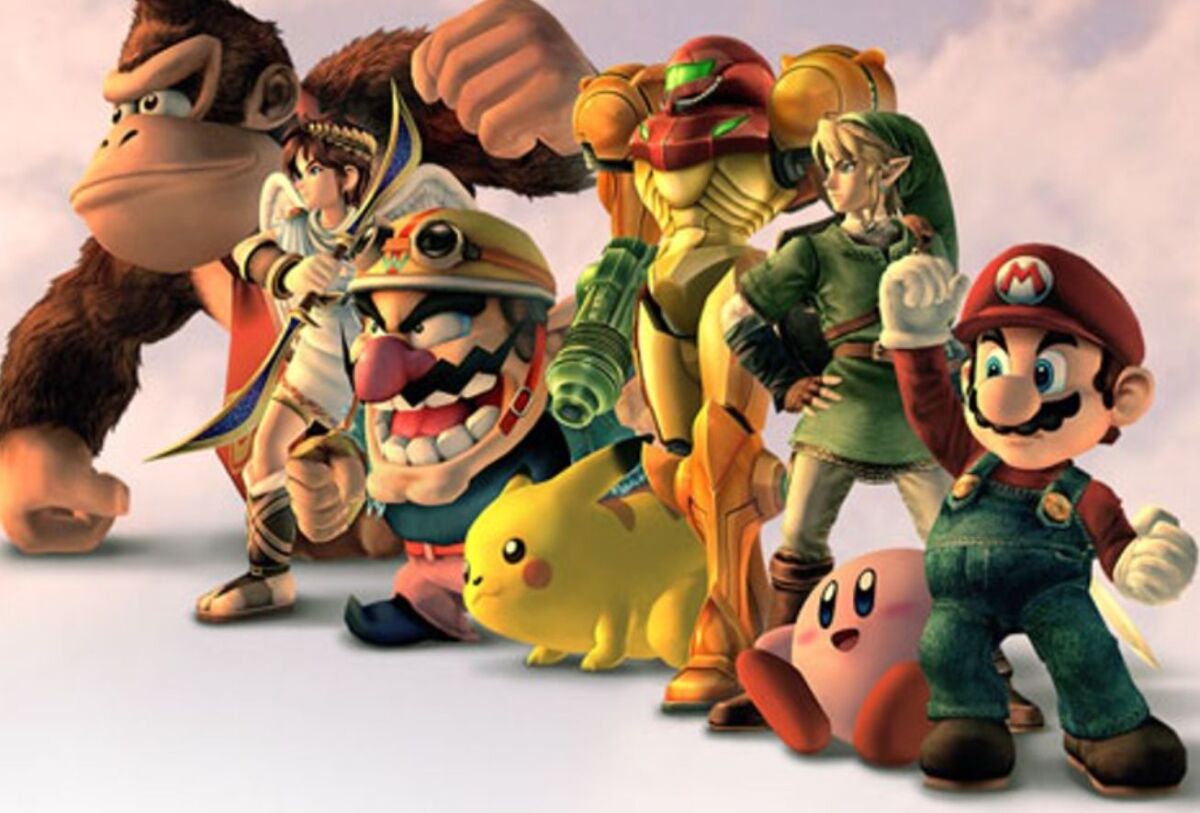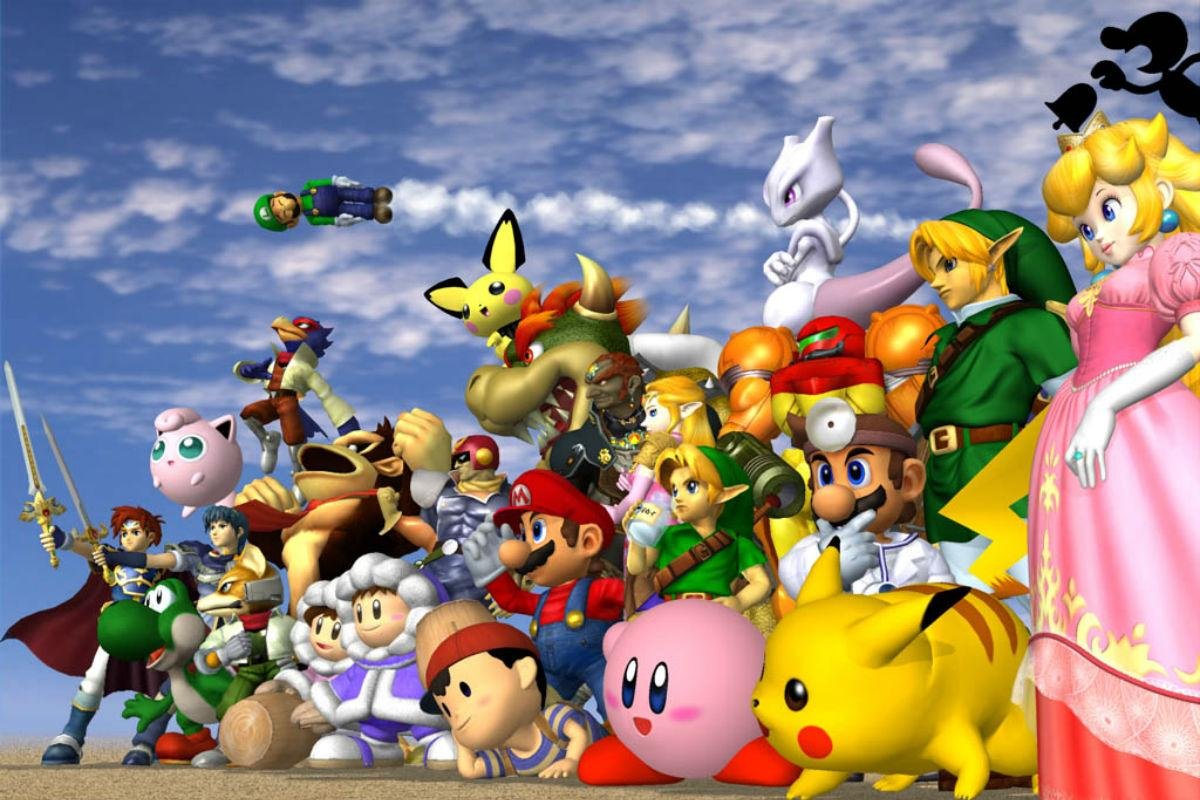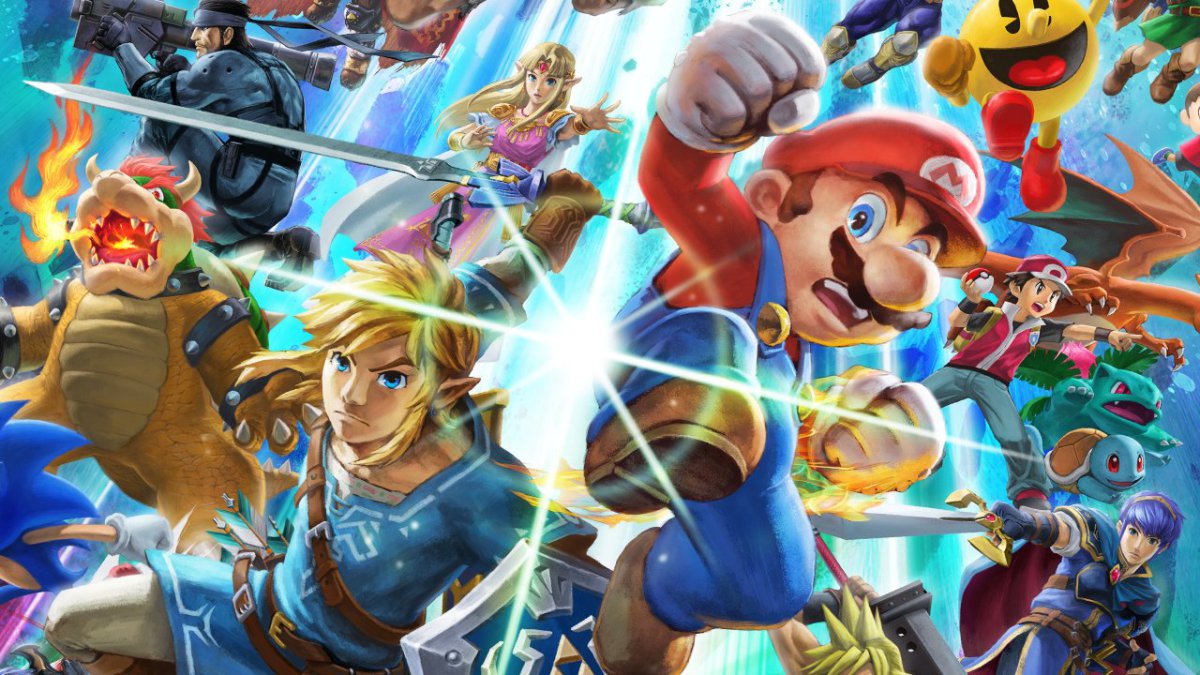There are few franchises that seem to have been played by almost everyone in the world at least once. Standing with titans like Pac-Man, Mario Kart, and Call of Duty, Super Smash Bros. is a household name. Chances are, if you visited a friend’s house when you were a kid, walked down the hall of your dorm, or simply play a lot of video games, you’ve encountered at least one match in this iconic series. To some people, the Smash Bros. games are some of the best party and fighting games that have ever been made.
The series is a celebration, not just of Nintendo’s history, but of video games as a whole. In that respect, it’s one of the most unique properties being developed today. A meeting ground for some of our favorite characters and settings, one where you can finally have that battle to prove that yes, Jigglypuff can absolutely dominate Bayonetta in a fight or that Luigi is the superior brother.
These games can be as fun or serious as you make them, but for that reason, there can be quite a lot of debate over which game is the best in the franchise. Here’s our ranking of the Smash Bros. games from worst to best, winner takes all.
Ranking the Smash Games
5. Super Smash Bros.

Platforms: Nintendo 64
Release date: January 21, 1999
Every historic franchise needs to start somewhere. Super Smash Bros. for the N64 was revolutionary for introducing the formula that the entire franchise has used ever since, with the marketing for the game making the promise that your favorite Nintendo characters would enter an arena together and fight to the death.
There are few pleasures as great as seeing Yoshi putting the smackdown on Donkey Kong. With a diverse cast of 12 characters, nine multiplayer stages, and a decent enough single-player, Super Smash Bros. did a pretty good job for its first iteration.
However, it being the first means that there can be a few later quality-of-life enhancements that might be missed by recent fans, as well as looking visually dated with its polygon characters. The controls are a little more simplified, and for some people, the fighting might feel a tad archaic, but it’s still Smash Bros. through and through. It may not have the most content, but it works and has a treasured history that can’t be overlooked.
Super Smash Bros. set the tone for the franchise that all the other games have been matching and adding to. It isn’t the most competitively viable because it was never supposed to be: Super Smash Bros. was meant to be a fun arena fighter where friends would have shouting matches as they punched one another (in-game and out) to get the Poké Ball at the top of Hyrule Castle.
4. Super Smash Bros. Brawl

Platforms: Nintendo Wii
Release date: January 31, 2008
Super Smash Bros. Brawl had huge shoes to fill as the follow-up to Super Smash Bros. Melee. On top of that, the game was delayed several times, which only added to the fervor for it. The anticipation for Brawl was high, and while it did deliver a lot of the classic Smash Bros. experience that many people wanted on the Wii, it also left many fans disappointed in some of its choices.
The main source of the outcry came from the players that were into Melee’s more balanced and fast-paced direction. Brawl was designed to be much less competitive than its predecessor with slower movement, unbalanced characters, and tripping, which caused characters to trip randomly during the match and throw off someone’s groove to give the edge to the opponent temporarily. Even non-competitive Smash players weren’t too enthusiastic about this addition, and it’s not surprising that the mechanic hasn’t made a return since.
However, there were some great features that were added, and some people even appreciated the slower pace of the game. Brawl offered a more accessible Smash Bros. and appealed to the broader demographic of the Wii’s install base. It also continued the trend of expanding the roster and stage list. Brawl’s crowning achievement, however, is the content outside of the main multiplayer attraction.
Its single-player is one of the best in the series, with a full story mode with cutscenes. There was also a lot to collect, which gave you a reason to keep coming back to these modes to try and get all the trophies and music pieces. Brawl wasn’t perfect, but it did have some good ideas that would make for great additions in future titles.
3. Super Smash Bros. for Wii U and the 3DS

Platforms: Nintendo Wii U, Nintendo 3DS
Release date: September 13, 2014
In many ways, Super Smash Bros. for Wii U and the 3DS, otherwise known as Smash 4, was a return to form for the series and was the first time Smash was released on two platforms simultaneously. The 3DS did a pretty decent job for what it was, and though it suffered a few minor graphical deficiencies in comparison to its Wii U version, it played nearly the same. Though the 3DS was missing a few stages and other small features, at their core, the two play the same.
It was also the first game in the series to include post-launch DLC characters, which would have a profound impact on the meta and future character introductions in the series. Smash 4 brought the series into the modern age by incorporating more online functions like the DLC characters, cross-play between Wii U and 3DS, and post-launch buffs and nerfs.
Brawl may have been dominated by a few select characters (looking at you, Meta Knight) and included other weird anti-competitive mechanics, but Smash 4 is able to balance the roster out over time while retaining the fun the series is known for. The single-player sees old favorites like Classic mode make a return, but the story mode is notably absent apparently due to fears of it leaking like Brawl’s did.
Some single-player content was even locked to the Wii U version, so if you were playing on the 3DS version of the game, you were getting less single-player content. For instance, the Wii U had Smash Tour and Events mode, both of which helped to liven up the fun when the internet was out or your friends had had enough losing for one day.
Smash 4 proved that Nintendo and Sakurai were listening to the fans and were willing to make changes, at least to some degree.
2. Super Smash Bros. Melee

Platforms: Nintendo GameCube
Release date: November 21, 2001
What hasn’t been said about Super Smash Bros. Melee?
It took the formula that was introduced in the original and tightened it to near perfection while continuing to introduce new mechanics and ideas that would be revised in later entries. The character roster doubled with all members of the previous roster returning while adding new characters and franchises, like Fire Emblem characters Marth and Roy, obscure characters like Mr. Game and Watch, and more Nintendo classics like Bowser and Mewtwo.
The stages tripled, going from 9 to 28, and helped to give more representation to characters that were already present on the roster but didn’t have a home turf to fight on yet, like Ness and Captain Falcon. The game also greatly expanded the single-player content: classic mode makes a welcome return, but new modes were added, such as Adventure Mode and All-Star Mode.
While some of these modes weren’t too interesting to replay, they did offer an additional distraction from the main event of the Smash Bros. series: the multiplayer. The competitive scene blew up with the release of Melee, and, for better or worse, Melee has continued to be a strong contender within the competitive fighting game scene.
There’s a reason for that, though. The combat felt much more responsive to the average player, and the variety in characters, stages, and modes allowed the multiplayer to continue to flourish in a variety of settings. However, as good as the combat could feel, it has begun to feel dated, and the content is looking more bare-bones compared to the most recent and best Super Smash Bros. game.
1. Super Smash Bros. Ultimate

Platforms: Nintendo Switch
Release date: December 7, 2018
Super Smash Bros. Ultimate is the culmination of all the entries that came before it — literally. There are 114 multiplayer stages, and over 90 of those made appearances in previous games. On top of that, Ultimate also boasts over 80 playable characters, with the majority of them returning from previous games. Nintendo even added surprise characters that fans have been hoping would make an appearance/return for years now, like King. K. Rool, Solid Snake, and even Banjo and Kazooie. Every character has their own stage with a whole list of music from their respective games.
Ultimate truly feels like a complete mashup of all the other Super Smash Bros. games. Almost all the characters feel like they can pack a punch and be useful in a match, which is a huge feat considering the number of characters on the roster.
While Ultimate is overflowing with content, there are a few notable game modes and features that are absent such as Break the Targets and character trophies. Trophies are instead replaced with spirits, which can be a cool addition due to their gameplay effects in the World of Light mode. Their diversity is huge, but they don’t come with as much detail or history like the trophies tended to.
However, the aforementioned World of Light is one of the best (and longest) single-player modes that Smash has incorporated thus far, and the spirits’ power-ups allow characters from obscure franchises such as Tomato Adventure, Captain Rainbow, and Teleroboxer to make an appearance as a match’s theme.
Ultimate went all out with meeting Smash’s ultimate philosophy of celebrating these game franchises in a fun and meaningful way. It just may be the best Smash Bros. of all time, or at least for the foreseeable future.
READ NEXT: Ranking The SSX Games From Worst To Best
Some of the coverage you find on Cultured Vultures contains affiliate links, which provide us with small commissions based on purchases made from visiting our site.
